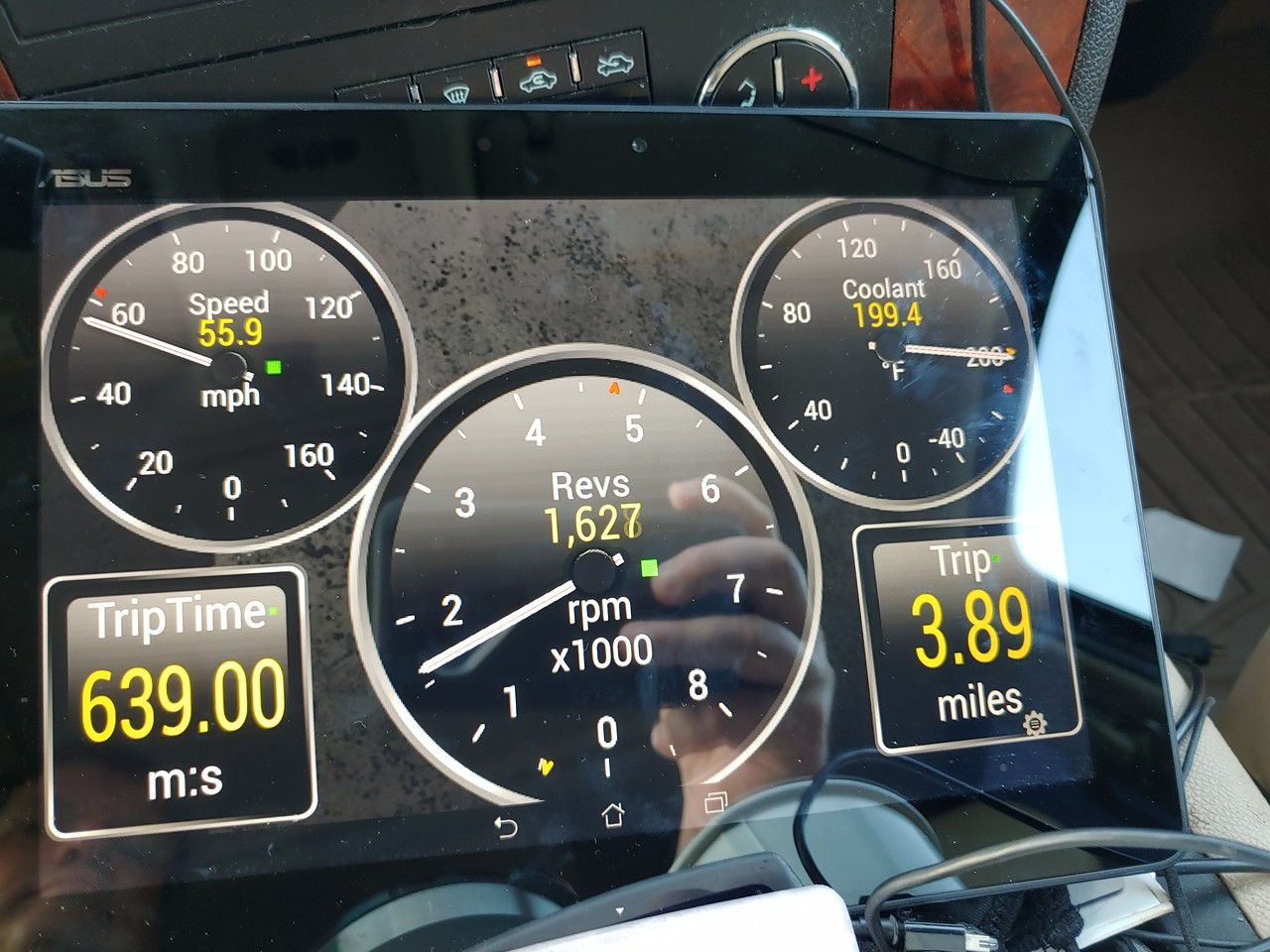Converting your car to utilize in-dash tablet gauges connected via OBD2 is becoming an increasingly popular modification for car enthusiasts and racers alike. This approach offers a modern, customizable alternative to traditional analog gauges, providing a wealth of real-time vehicle data right at your fingertips. But is it a reliable and effective solution for monitoring your car’s performance? Let’s delve into the pros and cons, and explore how to make this DIY digital dash a success.
The Appeal of Tablet Gauges: Why Go Digital?
The allure of in-dash tablet gauges is undeniable. Imagine replacing a cluster of often hard-to-read analog gauges with a sleek tablet displaying precisely the information you need, exactly how you want it. This setup leverages the power of OBD2 (On-Board Diagnostics II), a standard system in most modern vehicles that provides access to a vast array of engine and vehicle data. By connecting a tablet via an OBD2 adapter, you can monitor everything from engine temperature and RPM to boost pressure and fuel efficiency, all through user-friendly apps like Torque Pro and others.
Advantages of In-Dash Tablet Gauges
- Cost-Effectiveness: Compared to purchasing and installing multiple high-quality analog gauges, a tablet-based system can be significantly cheaper. You likely already own a tablet or can acquire an affordable one, and OBD2 adapters are readily available at low prices.
- Customization and Flexibility: Tablet apps offer unparalleled customization. You can choose which gauges to display, their layout, size, and even aesthetics. This adaptability means you can tailor your dashboard to your specific needs and preferences, whether for daily driving, track days, or off-roading.
- Data Richness: OBD2 systems provide access to a wide spectrum of data points, far beyond what traditional gauges typically offer. Tablets can display this wealth of information in real-time, giving you a comprehensive view of your vehicle’s health and performance.
- Ease of Installation: Setting up a tablet gauge system is generally straightforward. It avoids the complex wiring often associated with installing multiple analog gauges. Simply plug in an OBD2 adapter, mount your tablet, and install your chosen app.
- Modern Aesthetics: A tablet-based dashboard provides a clean, modern look that can significantly update the interior of older vehicles or complement the tech-forward design of newer cars.
Potential Downsides and Challenges
Despite the numerous benefits, there are potential drawbacks to consider before committing to in-dash tablet gauges.
- Glare and Visibility: Tablet screens, especially in direct sunlight, can suffer from glare, making them difficult to read. This is a significant concern for driving safety, particularly during daytime.
- Heat Sensitivity: Tablets are electronic devices not designed for the extreme temperature fluctuations inside a car, especially in hot climates. Overheating can lead to performance issues, battery degradation, or even permanent damage.
- Reliability and Connectivity: The system’s reliability depends on the tablet’s performance, the OBD2 adapter’s stability, and the app’s robustness. Bluetooth OBD2 adapters can sometimes experience connectivity issues, and app glitches can occur.
- Power Management: Tablets need a consistent power source. Relying solely on battery power is impractical, requiring a wired power connection. Managing cables and ensuring a stable power supply is essential.
- Security Concerns: While less common, there are theoretical security risks associated with OBD2 ports. It’s crucial to use reputable OBD2 adapters and apps to minimize any potential vulnerabilities.
Key Considerations for a Bulletproof Tablet Gauge Setup
To mitigate the downsides and maximize the effectiveness of your in-dash tablet gauges OBD2 setup, consider these crucial points:
Tablet Choice and Preparation
- Dedicated Tablet: Ideally, use a dedicated tablet solely for gauges. This prevents performance issues from running other apps and simplifies the setup. Older or budget-friendly tablets can work perfectly for this purpose.
- Screen Brightness and Anti-Glare: Choose a tablet with good screen brightness and consider applying an anti-glare screen protector to improve visibility in various lighting conditions.
- Heat Management: While tablets aren’t designed for car environments, you can minimize heat exposure by avoiding direct sunlight, providing ventilation, or removing the tablet when the car is parked in hot conditions. For race applications, heat may be less of a concern for shorter durations.
OBD2 Adapter and Connectivity
- Wired OBD2 Adapter: For racing or performance-critical applications, a wired OBD2 adapter is generally more reliable than Bluetooth. Wired connections eliminate potential wireless interference and connectivity drops.
- Quality Adapter: Invest in a reputable OBD2 adapter from a known brand. Cheap, unbranded adapters can be unreliable and may not provide accurate data.
- App Selection: Torque Pro is a popular and well-regarded app, but explore other options like DashCommand, OBD Fusion, or Car Scanner ELM OBD2 to find one that best suits your needs and vehicle.
Mounting and Power
- Secure Mounting: A robust and secure tablet mount is vital for safety and visibility. Choose a mount that firmly holds the tablet in your desired location and minimizes vibrations. Consider custom mounting solutions for a cleaner integration.
- Hardwired Power: Hardwiring the tablet to your car’s electrical system ensures a reliable power supply and avoids battery drain. Use a proper 12V to 5V converter and fuse the connection for safety.
- Clean Wiring: Neatly route and conceal wiring to maintain a clean and professional look.
Tablet Gauges: Are They Right for You?
In-dash tablet gauges OBD2 offer a compelling DIY solution for car performance monitoring. They provide a cost-effective, customizable, and data-rich alternative to traditional gauges. For budget-conscious enthusiasts, racers needing temporary setups, or anyone seeking a modern digital dashboard experience, tablets are a fantastic option.
However, it’s essential to acknowledge the potential challenges related to glare, heat, and reliability. By carefully considering tablet choice, OBD2 adapter selection, mounting, and power management, you can mitigate these drawbacks and create a robust and effective digital gauge system. Whether you’re aiming for a high-tech street car or a functional race car display, in-dash tablet gauges are a DIY modification worth exploring.
